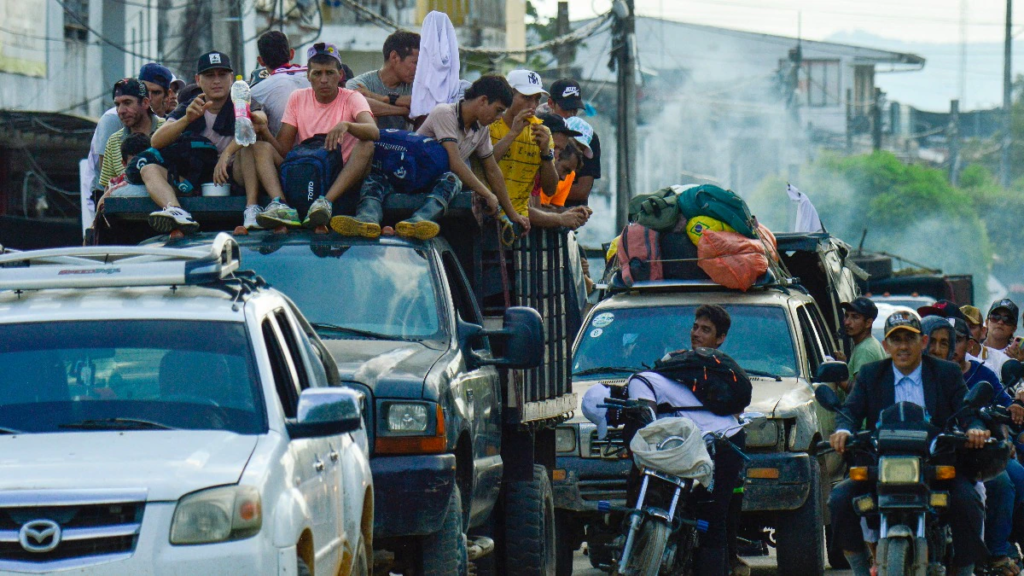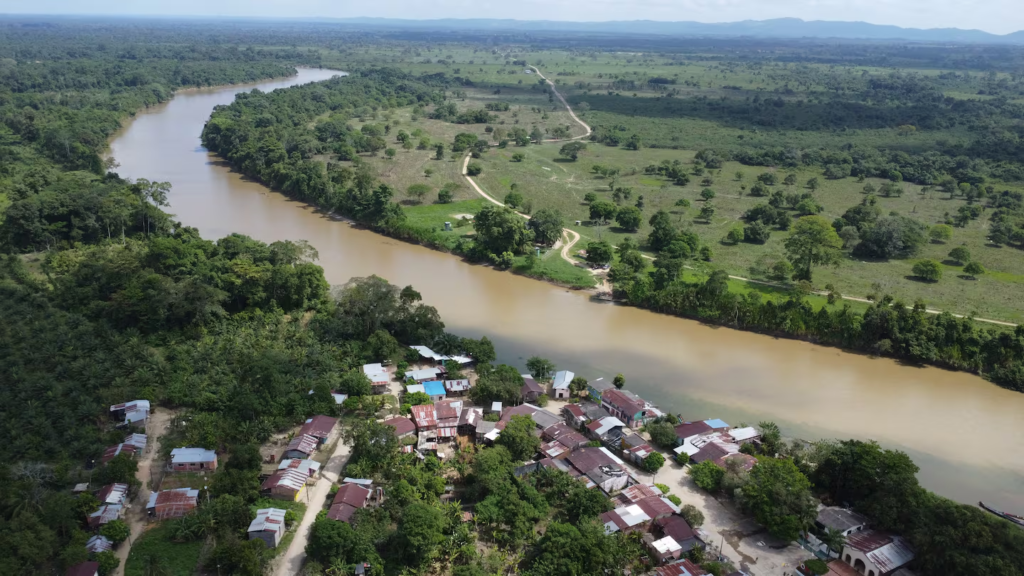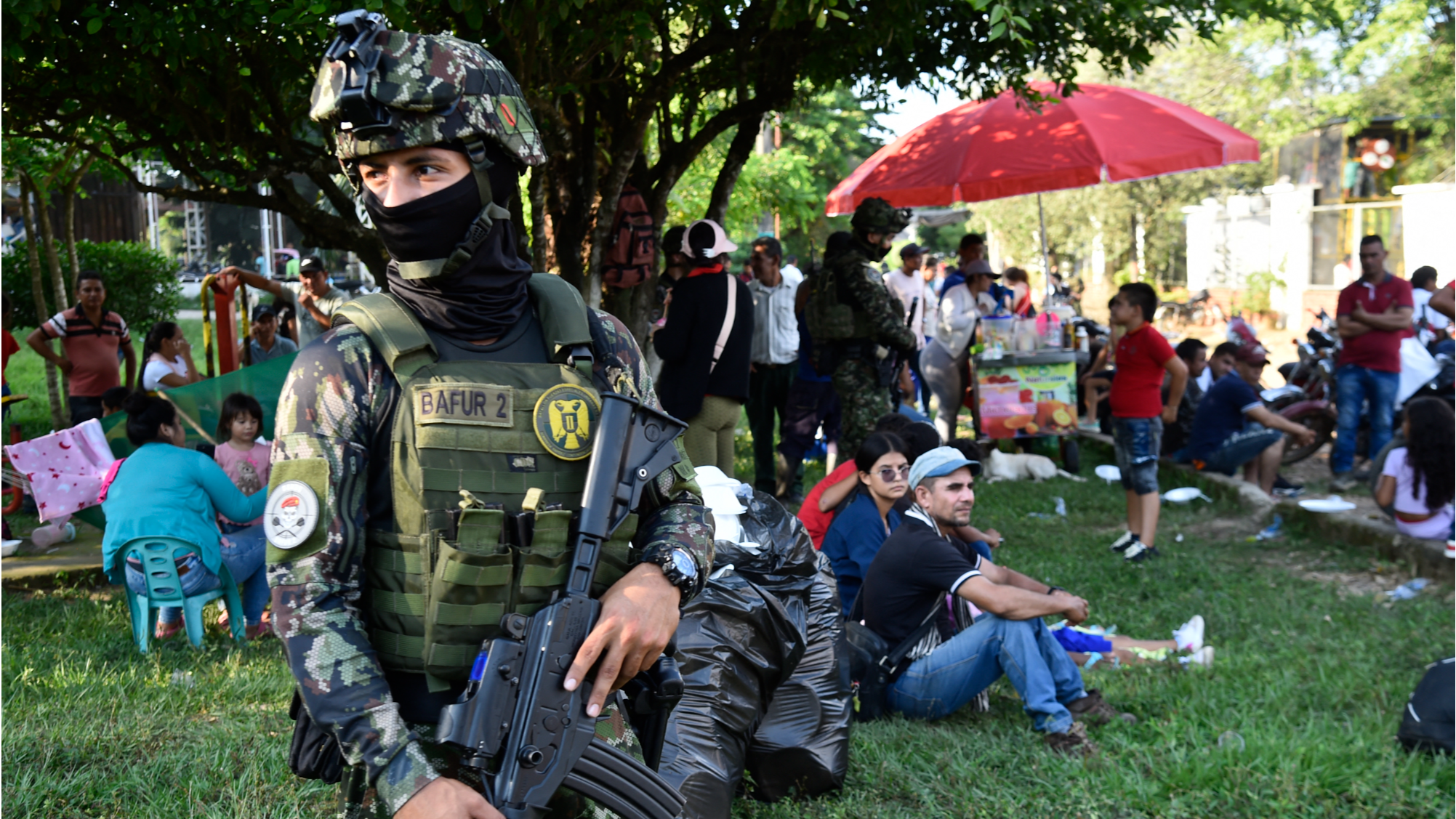The fragile peace in Colombia has once again been shattered by a brutal outbreak of guerrilla violence. In a four-day span, more than 80 people have been killed, and thousands of civilians have been forced to flee their homes in the violence-ridden region of Catatumbo.
This latest wave of brutality, involving clashes between the National Liberation Army (ELN) and dissident factions of the now-defunct FARC guerrilla group, has raised alarms about the collapse of Colombia’s peace process, as armed groups continue to wreak havoc over territorial control and drug trafficking routes.
The violence has brought attention back to the deteriorating humanitarian situation in some of the country’s most conflict-affected regions, where residents once again find themselves caught in the crossfire.
As tensions rise, questions linger about the future of peace in Colombia, particularly as President Gustavo Petro’s “total peace” initiative seems increasingly in jeopardy.
Escalation of Guerrilla Warfare in Catatumbo
The most recent outbreak of violence began on Thursday when the ELN launched an assault on a rival faction of former FARC combatants in the Catatumbo region, located in Colombia’s northeastern department of Norte de Santander.
The attack, which saw both guerrilla groups fighting fiercely for control of the region, has resulted in widespread devastation. Catatumbo, known for its remote and rugged mountainous terrain, has long been a hotspot for guerrilla warfare due to its strategic location along drug trafficking routes.
According to Governor William Villamizar of Norte de Santander, more than 80 people have been killed in the clashes, and the violence has displaced thousands of civilians.
Families have fled for their lives, seeking refuge in the nearest towns or crossing into Venezuela to escape the bloodshed. The displacement has created an acute humanitarian crisis, with makeshift shelters being set up in towns like Tibu and the Venezuelan government launching operations to assist the displaced.
Read : Tourists Banned in Colombia’s Sacred Laguna Verde Lake
The influx of refugees into Venezuela, some of whom had previously fled political and economic instability in their home country, has added another layer of complexity to the situation.
#Colombia. Guerrilla of the #ELN, takes 7 municipalities of #Colombia with blood and fire, attacking the civilian population and the #FARC, more than 60 dead, and hundreds of displaced people. The #Petro government suspends peace talks with this armed group. pic.twitter.com/j35RcyifJF
— DiversaComunicaciones (@DiversaComunic2) January 19, 2025
Geovanny Valero, a 45-year-old farmer who sought refuge in Venezuela, expressed the heartbreak of leaving Colombia once again. “As a Colombian, it is painful for me to leave my country,” he said, reflecting the sorrow of those who have been forced to flee their homes for a second time.
In response to the escalating violence, Colombia’s military has mobilized approximately 5,000 troops to the region in an effort to regain control and restore order.
However, the conflict has shown no signs of abating, and the number of casualties continues to rise. In addition to the guerrilla factions, other armed groups, including paramilitaries and drug cartels, are also vying for power in this lawless region, complicating any efforts to establish peace.
The Role of the National Liberation Army (ELN)
The ELN, one of Colombia’s largest remaining guerrilla groups, has long been involved in the country’s civil conflict, professing a leftist, nationalist ideology while engaging in criminal activities, particularly drug trafficking.
Despite years of failed peace talks with various Colombian governments, the ELN has remained a significant player in the ongoing violence.
The group has recently intensified its military operations, often targeting rival armed groups such as the FARC dissidents, who refuse to disarm after the official peace agreement signed in 2016.
The ELN’s actions in Catatumbo are a prime example of the ongoing struggle for control over territories that have strategic value for the production and trafficking of illicit drugs, including cocaine.

In addition to fighting other guerrilla factions, the ELN has clashed with the Gulf Clan, Colombia’s largest drug cartel, in the northern regions of the country. These internal power struggles between organized crime groups have led to further violence and instability, with at least nine deaths reported in recent confrontations with the Gulf Clan.
Despite its professed ideological motivations, the ELN’s deep entanglement in the drug trade raises questions about the true nature of the group’s operations. The violence in Catatumbo, alongside reports of ELN members going door to door to target suspected FARC sympathizers, underscores the brutality of the conflict, in which civilians have become helpless pawns.
As Colombian forces engage in military operations against the group, the ELN shows little willingness to engage in peace talks. This resistance to negotiation, combined with their involvement in the drug trade and criminal enterprises, has prompted President Gustavo Petro to suspend negotiations with the ELN, halting the government’s pursuit of “total peace.”
In a recent post on social media, Petro condemned the group for committing “war crimes” and accused them of undermining efforts to bring peace to Colombia.
The Collapse of Peace and the Humanitarian Crisis
The recent eruption of violence in Catatumbo is not an isolated incident but rather a reflection of the broader collapse of peace in Colombia. While the 2016 peace deal with the FARC, the country’s largest guerrilla group, initially held promise for ending decades of conflict, it failed to address the root causes of violence in many regions.
As former FARC fighters rearmed or joined other armed factions, the country saw a resurgence of violence, particularly in areas like Catatumbo, where drug cartels, guerrilla groups, and paramilitary forces vie for control of territory.
The humanitarian situation in Colombia’s conflict zones continues to worsen, with civilians bearing the brunt of the violence. The country’s Ombudsman’s Office has warned that social leaders, peace signatories, and children are particularly vulnerable to kidnapping, forced displacement, and even death at the hands of guerrilla fighters.
The army has provided some support by offering refuge to civilians in military bases and delivering food to affected regions, but the scale of the crisis far exceeds the resources available to the military.

The ongoing violence has led to the suspension of classes in affected areas, with schools being converted into shelters for the displaced. The number of displaced people continues to rise, and while humanitarian aid is being provided, it remains insufficient to meet the needs of the thousands of people affected by the conflict.
Many displaced families have been forced to rely on temporary solutions, including overcrowded shelters and makeshift camps, as they wait for a resolution to the violence that has torn apart their lives.
As the death toll climbs and more communities are displaced, the question remains: will Colombia ever achieve lasting peace, or are these recurrent outbreaks of violence a permanent feature of the country’s future?
The country’s ability to navigate these challenges will depend largely on the willingness of all parties—armed groups, the government, and the international community—to work together to resolve the underlying causes of the conflict and address the humanitarian needs of the affected populations.
For now, however, the violence continues unabated, with no clear end in sight. As the situation in Catatumbo worsens, Colombians can only hope that the government’s efforts to restore order and negotiate peace will succeed before even more lives are lost in this devastating conflict.

